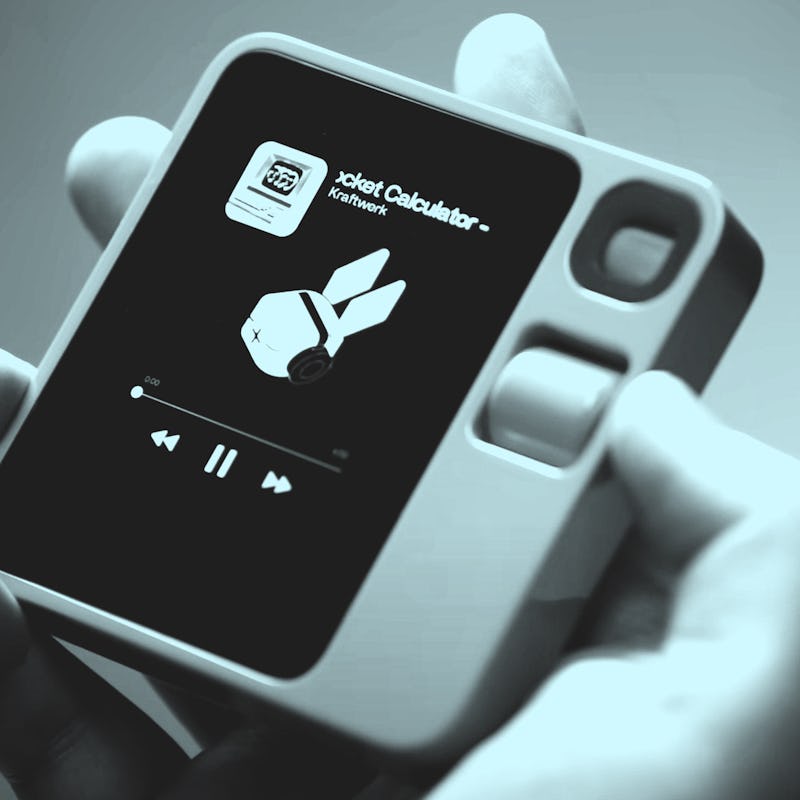Phone Apps Killed Gadgets, and Now AI Is Bringing Them Back
Gadgets are back to unbundle the smartphone.

For the better part of two decades, we’ve devoted space in our pockets and bags for smartphones (ones that only keep getting bigger).
The rectangular slabs have been MP3 players, PDAs, and cameras. The app economies on Android and iOS blew open the doors on what your smartphone could do, what services you could access, and what ways you could make money (i.e. selling in-app purchases and influencing).
Smartphones and apps changed everything, and in the process, they replaced the need for separate devices. But pay close attention, and you’ll notice a trend: Generative AI, machine learning, and the growing question of whether it’s actually better to have one device that does everything are weakening the hold smartphones have on our attention.
A small window of opportunity is opening to unbundle the phone, and with it, a new wave of AI-first gadgets is emerging. But do we actually want to have a pocket full of devices again?
Trying Something New
The Ai Pin might look like a smartphone on paper, but it doesn’t work like one at all.
We’re over a month out before they’re released in March, but both the Humane Ai Pin and the Rabbit R1 have appeared at times like they could replace the phone that’s already in your pocket, even though both startups have tried to tamp down that impression. In many ways, their voice assistants, laser projectors, and scroll wheels are deliberately trying to create fresh kinds of experiences for users, but even so, they do have an air of novelty to them. Still, similarities remain.
The Ai Pin won’t function without a $24 monthly subscription that includes cell service. The clothing-worn device comes with a phone number and can send text messages and make phone calls. Humane is ditching the concept of apps in favor of an ever-expanding number of bespoke integrations and skills, essentially “software as a service” taken to its ultimate extreme.
The Rabbit R1 looks more like a phone, but it leaves cellular connection entirely optional. In fact, for its $199 price, Rabbit claims you won’t need an additional subscription at all — accessing the AI models Rabbit has integrated will be entirely free. The R1 similarly obscures apps, letting you log in to services like Spotify or Uber, and then leaving it up to Rabbit’s “large action model” to navigate and control web apps when you ask for a playlist or order a car ride.
These devices are capable of doing smartphone things; they just go about delivering results (and to be clear, we don’t know how well they’ll deliver them) in a way that’s mostly hidden and hands-off. Maybe they won’t replace your smartphone, but it’s hard to avoid the comparison when the smartphone has taken up the task of doing so many things we used to do with separate devices.
The Old Ways
The Kindle is a dedicated reading device that most everyone can agree on.
We didn’t always rely on one device to do everything. I’m of the generation that was able to have a smartphone for at least part of my adolescence, but even I remember when a phone, camera, and MP3 player were separate objects you had to take with you. There’s an obvious aesthetic attraction to going back to film cameras, iPods, and flip phones because style always has room for retrograde. But chasing a Y2K aesthetic aside, there’s a charm and utility to a gadget that only does one thing.
You can read an ebook on your phone or tablet easily. Higher and higher resolution screens have made doing so more pleasurable over time, but there’s a reason the Kindle still sells. E Ink displays are easier on your eyes; a hard drive devoted to books and audiobooks fills up far slower than one that has to squeeze in photos and videos. A dedicated device for reading makes sense.
iPods carry a huge amount of cultural relevance, but the modders keeping them alive are meeting the demands of teens who like how they look just as much as they are people who want to listen to music in a focused way. Streaming changed the culture of music, but it’s not that hard to go back to the way things were. I’ve loaded an MP3 player app on my Playdate, filled it with music from Bandcamp, and largely been able to get by carrying one extra thing with me. It’s not as impossible as it might seem to go back to the days of owning multiple devices, and there might have been a reason we tolerated bringing a bag of electronics with us in the first place.
Unbundle Your Mind
It’s premature to claim that the feeling of potential that’s greeting new gadgets in 2024 will go anywhere. The smartphone could change again and swallow up another new way of computing. My hope, though, is that curiosity and the belief that smartphones aren’t perfect multitaskers produce something entirely different. Maybe not a smartphone replacement, but a new kind of product that fits in the same way e-readers, MP3 players, and other gadgets used to.
This article was originally published on